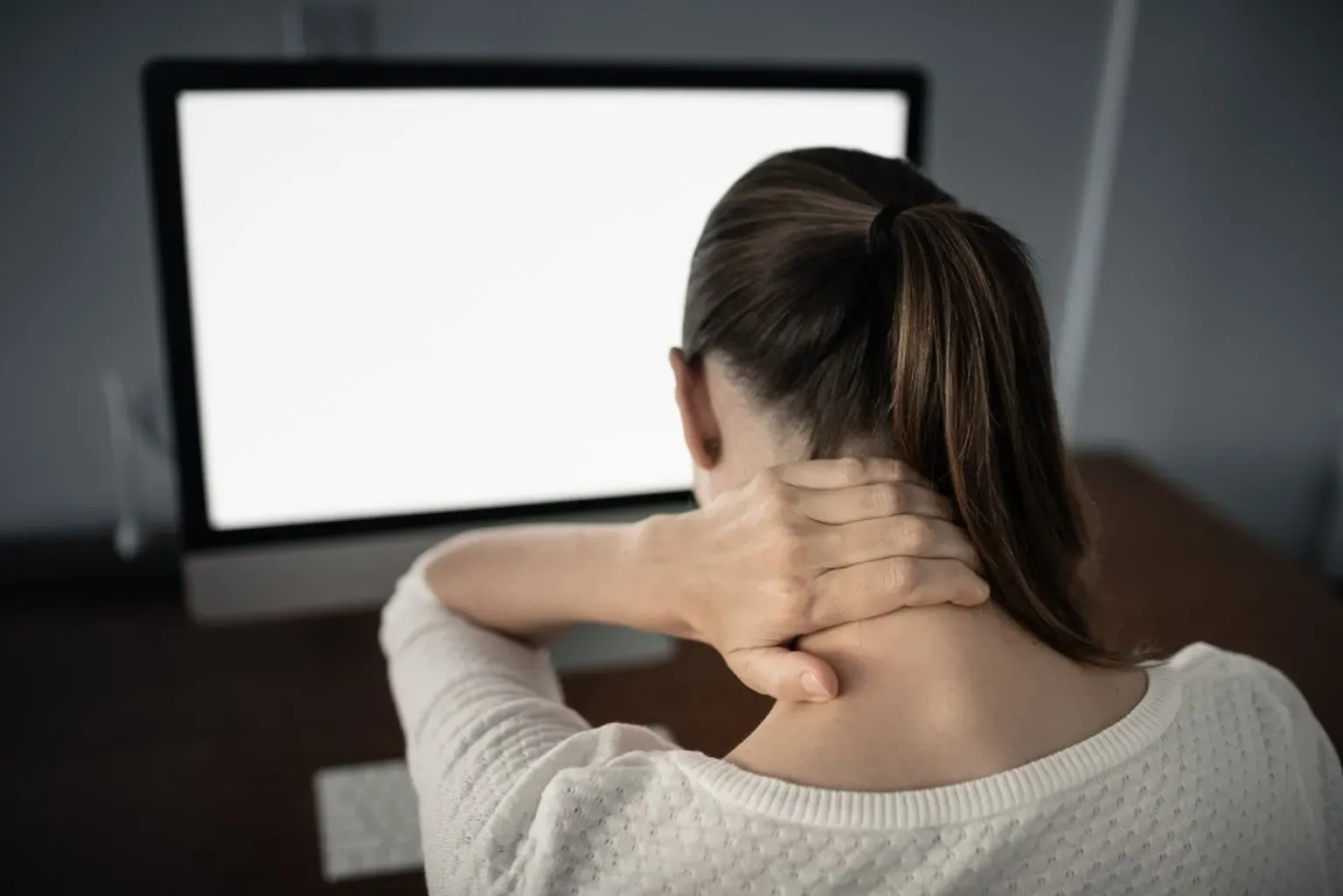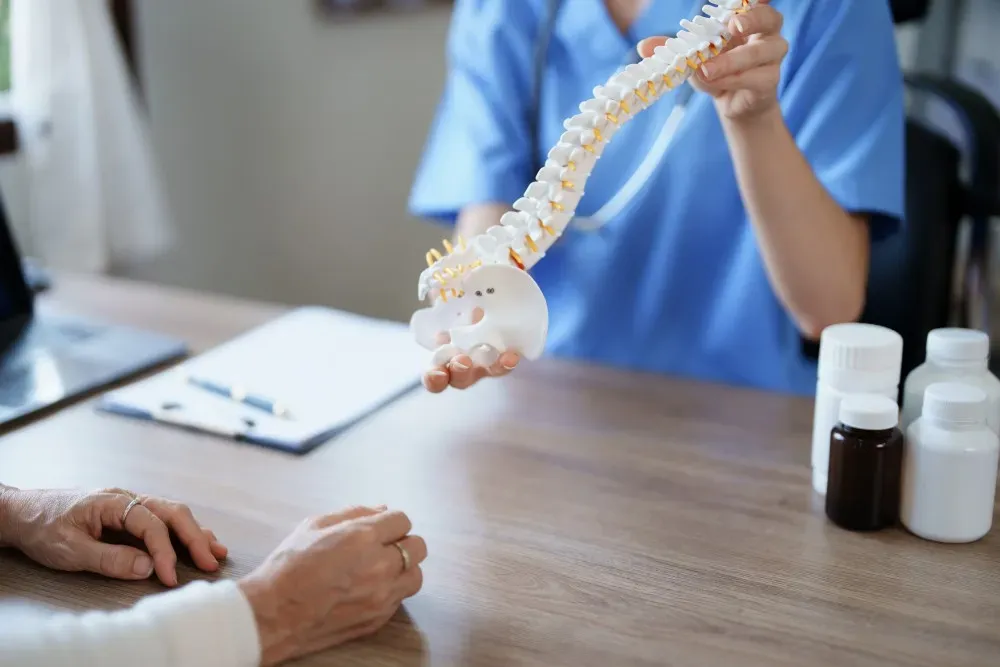Neurosurgery & Orthopedic Surgeons in Jacksonville

What is the Best Pain Management for a Herniated Disc?
A herniated disc in the lumbar or cervical spine can lead to significant back pain. If the disc is pressing against a spinal nerve root, you may also have leg pain, numbness, weakness, and other symptoms.
A herniated disc in the lumbar or cervical spine can lead to significant back pain. If the disc is pressing against a spinal nerve root, you may also have leg pain, numbness, weakness, and other symptoms. Some herniated discs cause you to feel pain that’s severe enough to disrupt your daily life and normal activities.
The good news is that many herniated discs start to improve and heal within a few weeks. In the meantime, there are several treatments you can try to reduce pain and get back to your daily activities. Keep reading to learn the best at-home and doctor-prescribed pain management for a herniated disc.
HOME CARE
There are several things you can do on your own to relieve herniated disc pain and feel more comfortable throughout the day. Try one or more of these treatments:
- Rest. If your back or neck is hurting, take it easy for a few days and avoid bending and twisting activities that aggravate the pain. We don’t recommend bed rest for longer than one or two days at most — prolonged bed rest can lead to increased pain, weakness, and stiffness. After resting for a few days, stay active with low-impact exercises like walking, gentle yoga, swimming and stretching to maintain strong, flexible muscles and joints.
- Ice/heat therapy. Ice therapy can help relieve pain, swelling, and inflammation in your back or neck. Apply ice packs for 20 minutes several times a day while you’re in pain. You can also apply heat packs to soothe and loosen tight muscles. We recommend using heat packs or a warm towel right before stretching or exercising to relieve muscle tension. At night, a warm bath before bed can loosen tight, tense muscles and make sleeping more comfortable.
- Over-the-counter medications. You can take a pain reliever like acetaminophen to reduce mild to moderate pain, or NSAIDs (ibuprofen, naproxen) to reduce pain, swelling and inflammation. Talk to your doctor before taking NSAIDs for more than a few days — these medications cause an increased risk for bleeding and heart problems in some people.
- Posture adjustments. Maintain good posture while you’re sitting and standing during the day. Poor posture places more stress and pressure on the spine, which leads to increased pain and discomfort.
- Sleeping positions. Some sleeping positions worsen herniated disc pain at night. Try to avoid sleeping on your stomach, which can lead to increased back and neck pain. Sleep on your back with a pillow under the knees or on your side with a pillow between the legs to reduce pressure on the spine and keep the spine and hips in alignment.
Some people also find pain relief by pursuing alternative or complementary treatments like massage therapy, chiropractic manipulation, and acupuncture.
MEDICAL MANAGEMENT
Along with home care, your doctor may recommend other non-surgical treatments to help relieve pain and symptoms.
- Prescription medications. If you’re in a lot of pain, your doctor can prescribe a short-term course of painkillers. Your doctor can also prescribe a short-term course of muscle relaxants if a herniated disc is causing painful muscle spasms.
- Cortisone injections. Cortisone is a powerful anti-inflammatory that can be injected directly into the space around the spinal nerves. A cortisone injection reduces inflammation around the nerves and relieves pain. Injections are not long-term solutions — the pain-relieving effects recede after a few weeks or months. However, short-term pain relief allows you to stay active and participate in physical therapy while your body heals.
- Physical therapy. Physical therapy helps reduce back and leg pain and strengthen the core, back and leg muscles that support the spine. A physical therapist will work with you to strengthen weak muscles that are placing more stress on the spine and contributing to herniated disc pain. A therapist will also guide you through gentle stretches and exercises to relieve pain and improve flexibility.
WHEN IS SURGERY NECESSARY?
If conservative treatments fail to relieve your pain and symptoms after six weeks, your doctor might suggest surgery. There are several minimally invasive surgical options available for treating a herniated disc. Depending on your specific case, you may require a combination of surgeries.
- Discectomy. During a discectomy, your spine surgeon removes the portion of the disc pressing against spinal nerve roots.
- Laminotomy/laminectomy. During a laminotomy, your spine surgeon removes part of the lamina, the bone covering and protecting the spinal cord. During a laminectomy, your spine surgeon removes the entire lamina. These procedures relieve pressure on the nerve roots.
- Spinal fusion. After a discectomy, laminectomy, or disc removal, you may need a fusion procedure. During a fusion, your spine surgeon will fuse two adjacent vertebrae to stabilize the spine and prevent painful movement.
- Total disc replacement. During a total disc replacement, your spine surgeon removes the damaged disc and replaces it with an artificial one.
Your doctor will walk you through all your surgical options and the risks of each one. Minimally invasive options are available for all the procedures listed above. Minimally invasive spine surgery requires smaller incisions, causes less tendon and muscle damage, and results in a shorter recovery period.
FIND TOP-NOTCH SPINE CARE AT INTEGRITY SPINE AND ORTHOPEDICS
Integrity Spine and Orthopedics offers top-notch spine and orthopedic care for acute and chronic conditions. We have the orthopedic care, pain management, sports medicine, and minimally invasive surgery services to help you to get back on your feet and back to doing the activities you love.
Please call our Jacksonville office or reach out online to schedule your first appointment.




